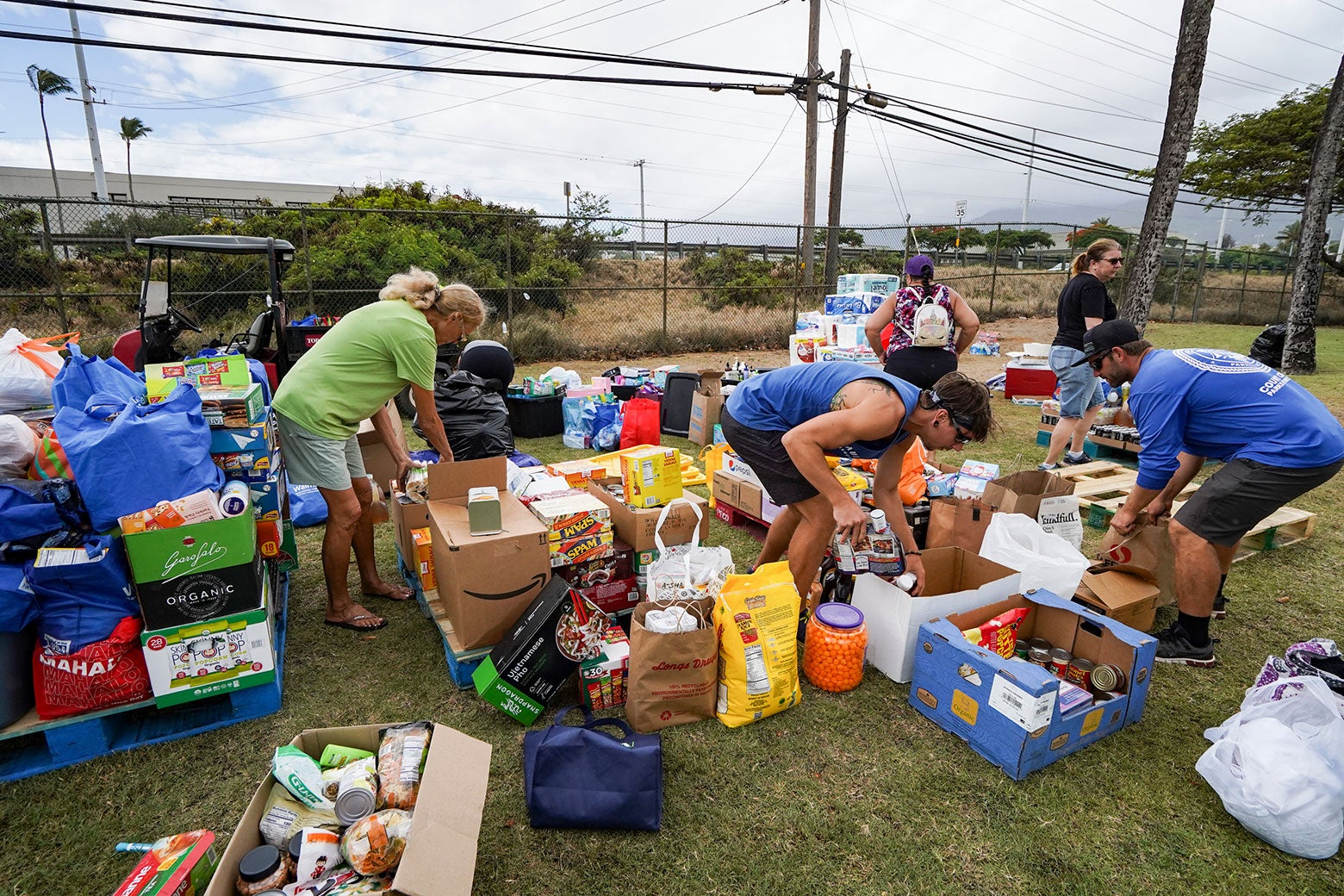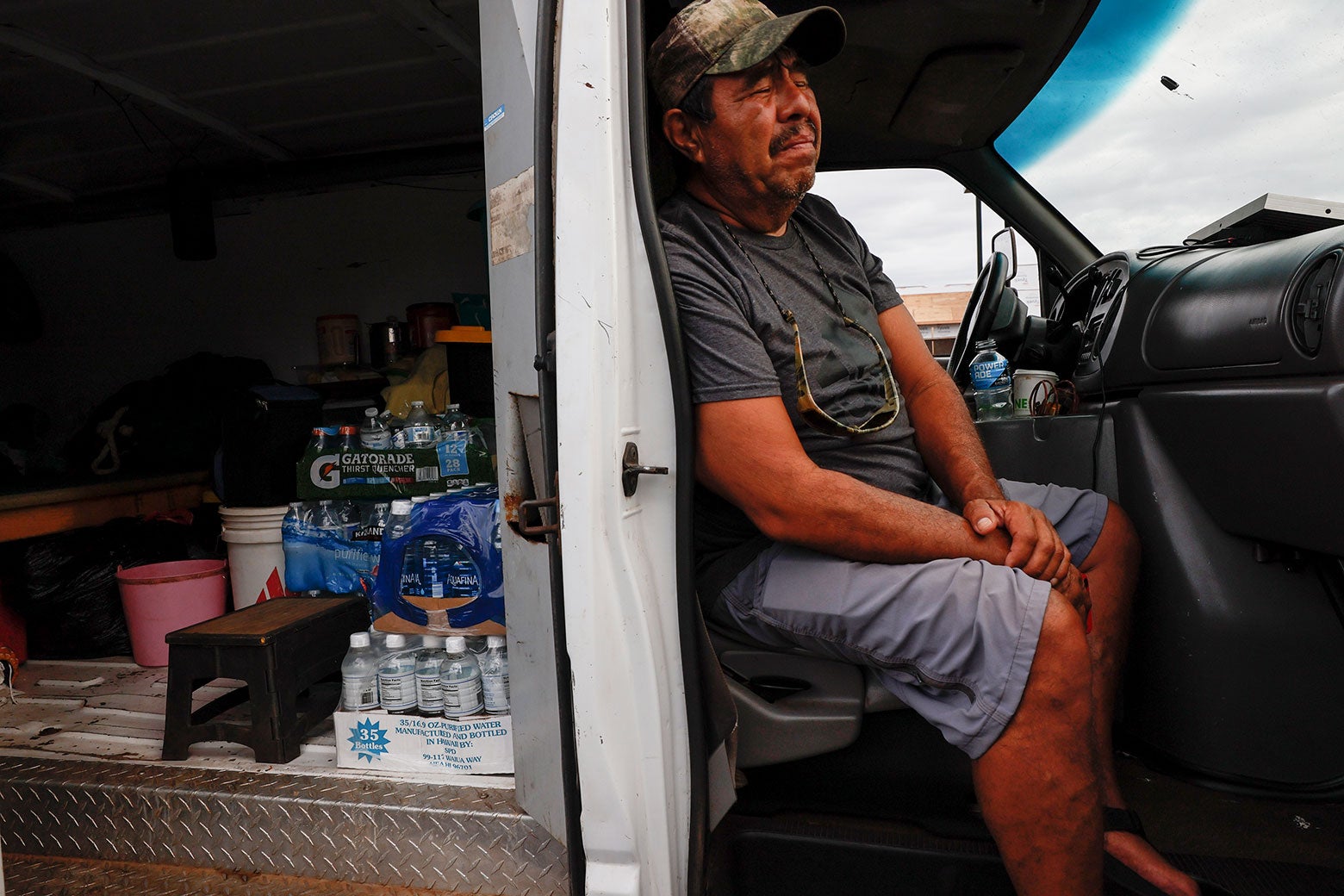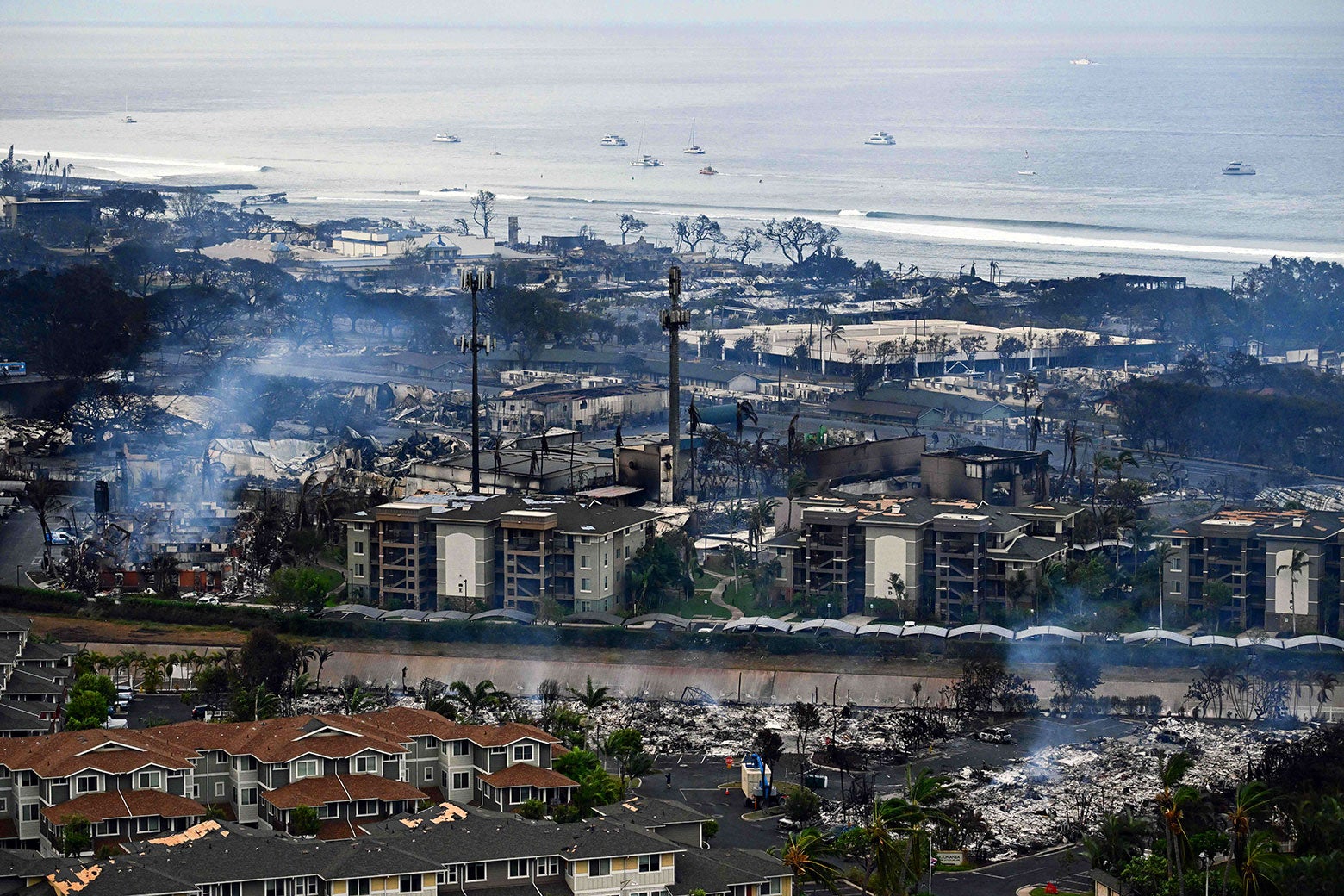As wildfires have devastated the western United States in recent years, casual observers have become familiar with a new term: “wildland urban interface,” or the transition zone between human settlement and unoccupied land. After studying three California cities devastated by wildfires, Santa Rosa (2017), Ventura (2017), and Paradise (2018), researchers concluded that “state and local land use policies, coupled with the state’s housing shortage, are ratcheting up the economic and human cost of wildfire by incentivizing rebuilding in the high risk wildland-urban interface.” In short, more and more people are moving to places that aren’t safe.
This sense that disaster risk is amplified by geographic transgression is also a familiar feature of hurricane-driven coastal flood events, and lets the public see each such tragedy (like the story of climate change itself) as a morality play: man’s folly in the face of nature.
Which is part of what makes the catastrophe in Lahaina, Hawaii, so shocking. Lahaina is not—was not—a sprawling new community in a tinder-dry national forest. The Maui town of 12,000, which burned to the ground this week, was the capital of Hawaii at the beginning of the 19th century. On Thursday, Mayor Richard Bissen told reporters, “It’s all gone. None of it’s there.” On Friday, the death toll was 55 and expected to rise, making the Maui wildfires some of the deadliest of the past 100 years.

Two weather events conspired to create hazardous conditions on Maui: First, the island has been experiencing a drought, which turned vegetation into fuel. Second, a cyclone passing to the south created sustained high winds, which whipped the fires across the island.
At the same time, experts say, the human environment on Maui and the other Hawaiian Islands has also become more conducive to wildfires. In the past half a century, the amount of land in the state dedicated to farming and ranching has dropped by more than 60 percent. The “green sugar blanket” has rolled back under international competition and rising real estate prices. Some of those fields, once irrigated to grow sugar cane, papaya, pineapple, and macadamia nuts, have become subdivisions or “gentleman farms.” Many lie fallow, creating a niche for the non-native, fire-prone grass that now occupies 25 percent of the entire state.
As Matthew Zeitlin explains in Heatmap, those invasive grasses are a worst-case scenario in a wildfire. They crowd out native plants, grow quickly and dry out quickly, and burn fast, allowing wildfires to move at blistering speed. That’s one reason fires in Hawaii have, since the 1990s, burned about four times as many acres each year as they did in the century prior. (Climate change may also play a role.)

The landscape of West Maui, where Lahaina is located, was dominated as recently as the 1980s by sugar and pineapple farms. “Sugar and pineapple are now gone from the West Maui region,” a government agricultural study concluded in 2015, “and new agriculture has been slow to re-emerge. Much of the former cropland has reverted to dry grass and shrubs that flush green after the rain and periodically burn off in wildfires as they dry in the hot Lahaina sun.”
The particulars vary from place to place, but this situation—an established community in a changing environment—is actually a more likely fire risk than people moving into the wildland-urban interface. One recent study found that the number of Americans exposed to wildfires has doubled over the past two decades, mostly because of increased fire threat, rather than people moving to danger. “Three quarters is because of fires encroaching on existing communities,” Mojtaba Sadegh, one of the authors, told Bloomberg.

If there’s any silver lining to the tragedy, then, it’s that Hawaii may have solutions at its disposal beyond the typical post-wildfire suggestions of stopping climate change (how?), retreating (to where?), and installing fireproof design (a burdensome requirement in a state whose existing housing crisis just got a lot worse). Some of these ideas have already been tried on the islands, including attempting to resurrect native forests, maintaining firebreaks, and using grazing animals to keep the grassland “fuel load” down.
Clay Trauernicht, a wildfire expert at the University of Hawaii, has argued for subsidizing farms on that abandoned agricultural land. Like ranching, farmland comes with plenty of environmental costs. After Lahaina, they may look small by comparison.
